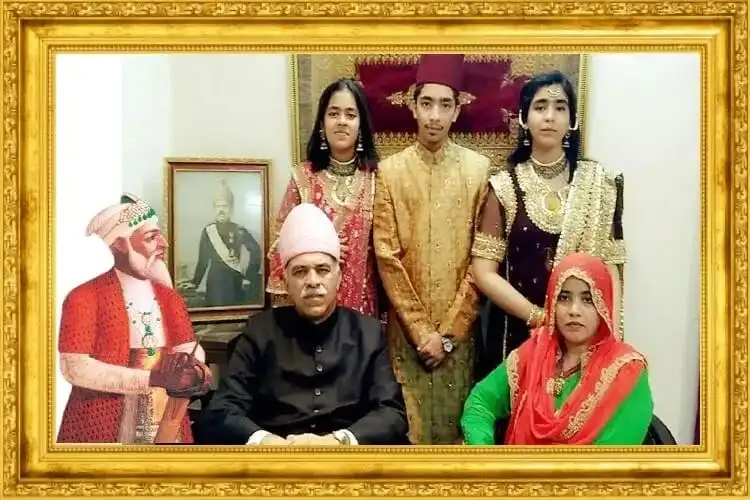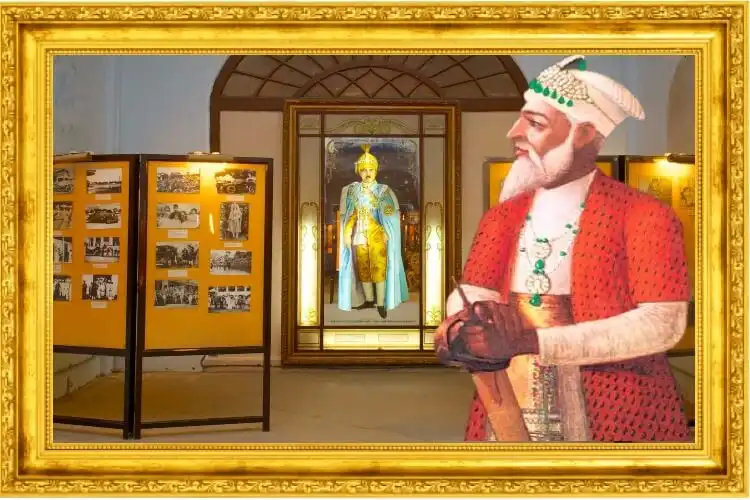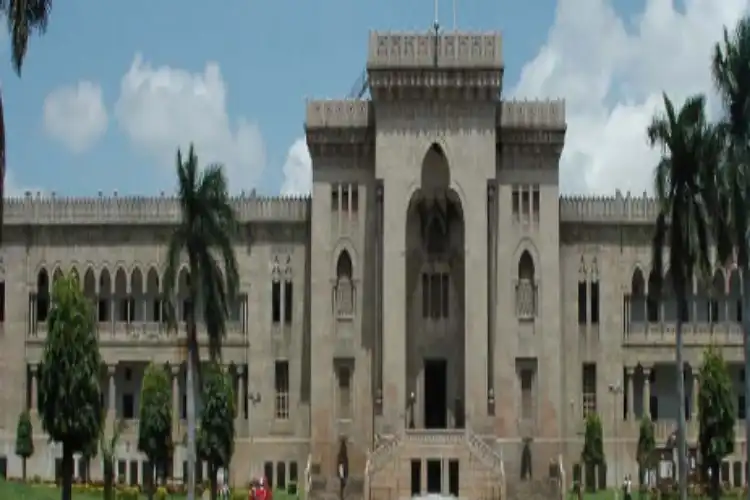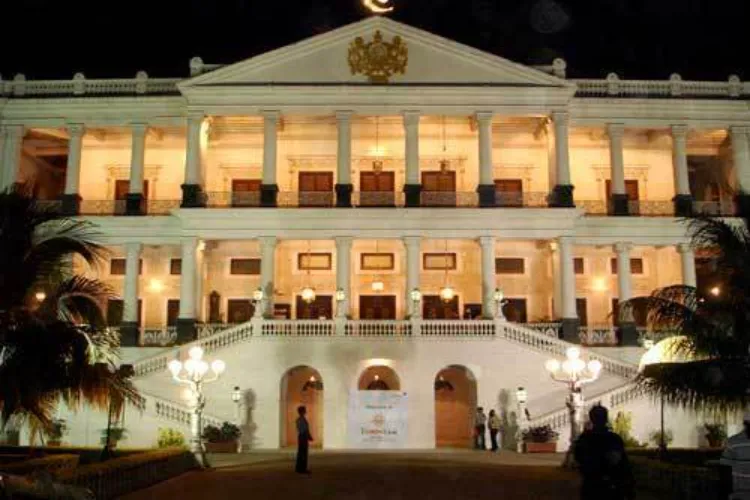Sheikh Yunus Mohammad/Hyderabad
Nizam-ul-Mulk Hyderabad, commonly known as Nizam-e-Hyderabad, was the name given to the rulers of the state of Hyderabad. The dynasty ruled between 1724 and 1948. After the fall of the Mughal Empire, the Kingdom of Asifa, the other name of the Hyderabad State, was the largest and most powerful of the Muslim independent states established in the subcontinent.
Khandaan
The founder of this state was Nizam-ul-Mulk Asif Jah, hence the name of this state Asifia or Asif Jah kingdom. The rulers of the Asif Jahi kingdom never claimed to be a kingdom. They were called Nizam and as long as they remained free, they continued to acknowledge the supremacy of the Mughal emperor, issued coins in his name, and followed orders from him at the time of his accession to the throne.
In this sense, the Deccan kingdom of Asifia was the Mughal Empire which was shifted to Deccan after the fall of Delhi and it was during the Asifi period that the Mughal system of government and the civilization that had been nurtured under the Empire flourished. The rule of Asifia Sultans over the Hyderabad Deccan has been of historical significance.
The Asif Jahi family ruled Hyderabad Deccan for 224 years. During this period the rulers rendered services to the people that are still talked about; all sectors of Hyderabad were developed.
The magnificent buildings built during the Asif Jahi era in Hyderabad, the city of pearls, are symbols of splendor and majesty and the citizens are proud of this heritage.
The seven Asif Jahi dynasty rulers of Hyderabad Deccan, the most famous are: Nizam-ul-Mulk Asif Jah I, Nizam Ali Khan Asif Jah II, Sikandar Jah Asif Jah III, Nasir Dawla Asif Jah IV, Afzal Dawla Asif Jah V, Mehboob Ali Pasha Asif Jah VI, and Mir Usman Ali Khan Asif Jah VII.
Apart from Hyderabad, the Nizams’ jurisdiction spread to Aurangabad in Maharashtra and Gulbarga in Karnataka too.
The reign of Asif Jah Sabe Nawab Mir Usman Ali Khan is known for its benevolence and philanthropy.
Nawab Asif Jah of Hyderababd
Under Asif Jah, Hyderabad made extraordinary progress in all fields. The family is continuing its philanthropy and service of humanity.
Ashim Jah Bahadur, son of Nizam-e-Haftam, had achieved a prominent position in society through his charities and public services.
The Asifia family is known for its splendor and grandeur.
In the past, marriages in the Nizam family consisted of 11 ceremonies. The wedding was accompanied by sessions of Qawwali. Nawbat and Chokhi dinner were also arranged. However, these three things are rarely seen in Hyderabadi weddings as of now.
Asif Jah Sabe Nawab Mir Usman Ali Khan Bahadur is even today revered for his humanitarian services.
His reign is called the golden era of Nizams’. He was known for his generosity and penchant for development. It’s in his reign that most of today’s Hyderabad city took shape.
The reign of Nawab Mir Usman Ali Khan (1911-1948) lasted for 37 years. He rendered memorable service to people of all religions; he famously said Hindus and Muslims are his two eyes.
Mir Usman Ali Khan was a proponent of secularism. He was also very popular among his Hindu subjects. One of the proofs of his secular policies and outlook is that he had appointed Maharaja Kishan Prasad as the Prime Minister of Hyderabad. He also provided financial support to mosques, temples, churches, and gurdwaras. He has been conferred the title of Sultan-ul-Uloom. His government work for the development and promotion of all languages and encouraged scholars of all religions. He also got schools opened. Nawab Mir Usman Ali Khan had a great sense of justice. He never interfered in the judicial system. During his 37 years in power, no one was sentenced to death.
Nawab Mir Usman Ali Khan wanted a British-style development of Hyderabad and is credited with launching all the mega projects.
He set up an Industrial Board that founded 469 industrial units.
All-round development of Hyderabad was ensured through the establishment of Railways, Civil Aviation, Telephone, Electricity Board, Drainage System, and mills like Manjira, Azam Jahi Cotton Mills.
The Victoria Memorial Home was established by Nawab Mir Usman Ali Khan to help orphans. All children in the orphanage had the right to live according to their faith.
Another major achievement of the state of Hyderabad is the establishment of the Osmania University. It started as Darul Uloom in 1856. It was later, in 1918 it was given the status of a modern-style university. The peculiarity of the Osmania University is that it was the first university to make Urdu the medium of instruction.
Islamic education was compulsory for Muslims and moral education for Hindus. A compilation and translation department was established under the Osmania University in which hundreds of books on every science and art in Arabic, Persian, English, and French were translated into Urdu and thus not only the teaching needs of the university were met but also Valuable increase was made in the knowledge base of Urdu.
The number of scientific and technical terms translated into Urdu by the Department of Compilation and Translation is 500,000.
Nawab Mir Usman Ali Khan wanted the construction of Osmania University Arts College, as it is today known, to be a reflection of Hindu-Muslim culture. The magnificent building of Osmania University is a masterpiece of architecture. Thousands of young people are still studying at the Osmanian University.
Osmania University, Hyderabad
Nawab Mir Usman Ali Khan also made a valuable donation for Banaras Hindu University.
He also set up a school in Hyderabad to impart special education and training to blind and deaf and hard of hearing children which is still a center of hope.
Nawab Mir Usman Ali Khan was made head of state by the Government of India for his outstanding services. He ruled from 1951 to 1956.
The Asif Jahi rulers had set up several trusts for the welfare of the people; 52 trusts were in the time of Mir Usman Ali Khan. Today, however, only four or five trusts are operational as over the years many trusts got dissolved.
The Nizam Charitable Trust is still functioning. Nawab Mir Usman Ali Khan established Nizam Orthopedic Hospital. He had gone to the Osmania University’s hospital to visit his relative, where he saw a boy suffering from severe knee pain.
Nawab Mir Usman Ali Khan inquired about the patient from the doctor. The doctor said that the knee treatment facility was not available in Hyderabad and it was available only in Pune. Nawab Mir Usman Ali Khan immediately summoned orthopedic specialist Dr. Ranga Reddy and started the construction of a magnificent dispensary.
The National Defense Fund was set up in 1965 by the then Prime Minister Lal Bahadur Shastri to deal with potential threats from neighboring countries. The Government of India appealed to the Raja and Maharajas for help. ۔The Prime Minister arrived in Hyderabad expecting help. Nawab Mir Usman Ali Khan donated a record five tonnes of gold to the National Defense Fund.
Nawab Mir Usman Ali Khan died in 1967. His funeral procession was attended by millions of people of all religions and till today remains the largest non-political and non-religious gathering in the city. The body of Nawab Mir Usman Ali Khan was cremated at Badida Nam King Kothi.
Nawab Mir Usman Ali Khan had 18 sons and 16 daughters. Among them, Nawab Hashim Jah Bahadur was the fifth and his beloved son.
Nawab Hashim Jah Bahadur was highly esteemed in the royal circles. He was a regular guest on the banquet of the administration. He was also on the guestlist for the Governor's House and Presidential Auction Ceremonies.
Nizam Palace: a beautiful building
Nawab Hashim Jah Bahadur had met eminent personalities of India, President of the Republic of India Dr. Zakir Hussain, Prime Ministers Pandit Jawaharlal Nehru, Rajiv Gandhi, Union Ministers, Governors, and Chief Ministers. Nawab Najaf Ali Khan is the son of Nawab Hashim Jah Bahadur and Mukhtar Begum Sahiba. Educated. He visited many countries. He had many opportunities to settle abroad. However, he was never tempted to leave the land of his ancestors.
Nawab Najaf Ali Khan has a compassionate heart and is always at the forefront to help the needy and deserving. He is also doing significant service for the survival of the Deccan civilization. Nawab Najaf Ali Khan said that the services of his grandfather Nawab Mir Usman Ali Khan are the manifestation of the sun.
Nawab Najaf Ali Khan said that funds were provided from Hyderabad to Macca and Madinah for almost 50 years. He said that 42 rabats were constructed in Saudi Arabia to facilitate Hajj and Umrah pilgrims. Najaf Ali Khan said that Hazrat Nizam also helped Palestine, Syria, Britain, and other countries.
Nawab Najaf Ali Khan said that he was representing at various levels for the survival and grandeur of the buildings constructed as well as for the equalization of the assets of the seventh Nizam.




